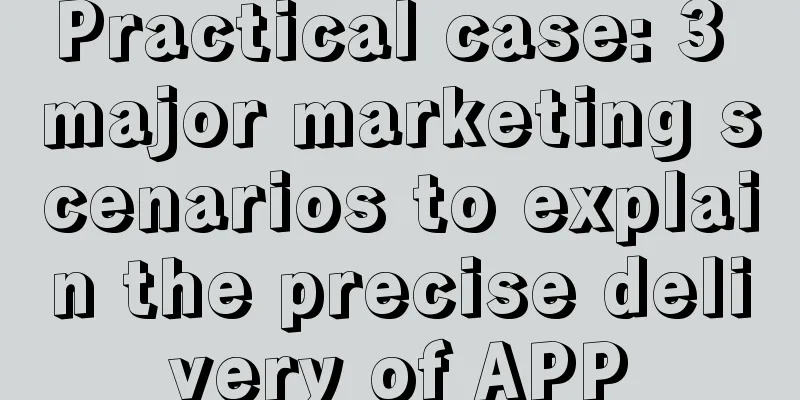Case review + fission methodology | Why is your fission activity ineffective?
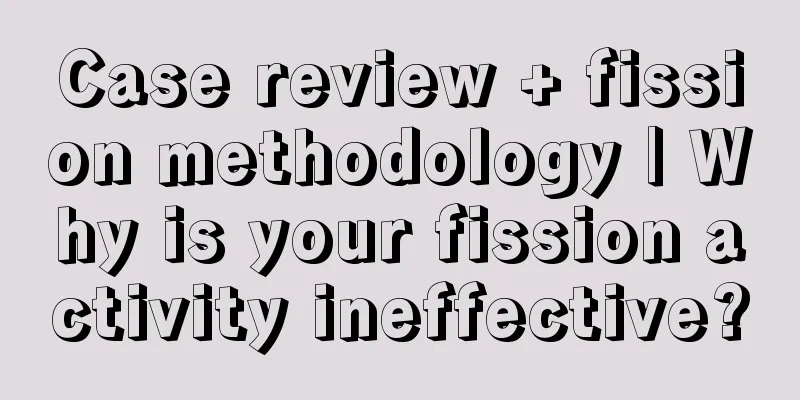
|
I recently chatted with a fellow operations partner and talked about a recent fission activity they did with old customers bringing in new customers. This friend reported that the fission effect was not good this time. Why is the fission effect not good? I discussed the reasons with her and found that the so-called fission gameplay template is important, but what is more important is the fission methodology. Know why it is so. Once you understand the methodology of fission, you can play with any fission gameplay template. Company Background: The company where this operations partner works is engaged in online education . Fission ideas: Use old users who have registered for a course as the starting traffic , share the course through these users, so that old users can bring in new users and encourage more new users to purchase the course. Execution process: Currently, only one course has opened the activity of old teachers bringing in new students, and this activity is called Invitation with Prizes. If an old user purchases this course in the mini program , the associated WeChat service account will receive a message template for an invitation to participate in a prize-giving event, and the message template can be used to enter the event details page. On the event details page, a personal poster generation function is provided. Old users who have registered for the course can generate posters with one click. There is a point worth learning from here. This event has thought a lot about users. Even the copywriting for users to post on WeChat Moments has been thought out for users, and can be copied with one click. Old users attract new users through posters, and new users can purchase a 69-yuan course for 9 yuan. That is, a red envelope of 60 yuan was given to new users. And old users received a tiered reward system. You can get gift A by inviting 3 people, but it cannot be stacked. If you do not redeem gift A, you can invite 2 more people, and 5 people can get gift B, which still cannot be stacked. You can get a C gift if you attract 10 new members. But there is a requirement that it will only be valid if it is completed within the activity time frame. Activity Results: For privacy reasons, we do not provide specific data for the activity, but the activity has a conversion funnel like this: Start traffic conversion: conversion of all old users of the service account to paying for the event courses Poster generation conversion: the conversion from paying for an event course to generating a poster Conversion from old customers to new customers: the number of users who generate posters to the number of new users who scan the poster QR code New user payment conversion: conversion of new users who scan the QR code on the poster to purchase the course for 9 yuan Problem sorting: Judging from the actual data, the above four conversion effects are not very ideal. So, let’s do some in-depth analysis on the above 4 conversions to see what the root cause of the poor performance is. Issues to start traffic conversion: The service account actually has a large user base, but not many of them pay for the activity course, which results in too little start-up traffic from old users to new users, which directly leads to a low number of subsequent paying new users. The activity was not preheated in advance, and the activity entrance was not obvious, resulting in a large number of old users not knowing that this course had recently held an invitation-based reward activity; Old users have to pay for the course before they can participate in the invitation prize event, which is a threshold in itself. Therefore, when starting traffic conversion, this level of the funnel illustrates a problem. The operational goals must be clear in a single activity. You cannot say that the goal of this activity is to bring in old customers and also to bring in some paid conversions. Because the goals will conflict with each other. This is what happened in this campaign. The goal of paid conversion affected the goal of bringing in new customers. But some people may wonder, can an activity only achieve one goal? No, you should be very clear about your two goals before the event. Then you can design the event based on these two goals, so there won’t be any conflicting goals between the events. Problems with poster generation and conversion: Since it is a paid course to generate posters, there is no continuity between the payment and poster generation of this activity. After users pay for the course, the activity entrance is not directly opened to users on the page. Instead, it is pushed to users through the WeChat service account message template. So this directly affects the conversion rate from paid course users to poster generation users Problems with converting old customers to new customers: If the conversion rate of this node is low, it must be that old users shared the poster to their friends circle, but the users in the friends circle were not attracted by the poster and thus missed it. Let's take a look at the poster first (for privacy reasons, I have censored the course content on the poster) Let's first analyze the factors that influence people to pay by scanning the QR code on a poster. There are actually four points: My friend did buy the course, so this poster has done it. You can see it at the top of the poster; What is the value of this course? The part I censored is actually just the course name, and I didn’t see any value-related content. As for who this teacher is, we can see that this is also missing, with only a small teacher portrait and a brief introduction. Whether the price of this course can arouse users' desire to buy. It is obvious that the instant discount of 60 yuan is not enough incentive. Looking at this issue from the perspective of consumer psychology, when facing C-end users in the circle of friends, we influence their payment and the most important thing is to arouse their emotional consumption. To sum it up in one sentence: make them feel it's a good deal, then stimulate their sense of loss. If they don't buy it, they will feel the pain of losing something. Problems with new user conversion to paid content: When users can long press the QR code to enter the payment page, it proves one thing: the user is interested, or at least curious. They clicked in but didn’t pay, which is the reason why the conversion rate at this node is low. This is also worth our further exploration. There are only two points: After reading the course details, I am not interested in the course; Although it’s only 9 yuan, it still feels like a bad deal. In fact, for C-end users, there is no such thing as absolute cheap or expensive. C-end users will only pay for products that they think are cost-effective and worthwhile. Target: The goal has not changed, which is fission and traffic. Fission ideas: In order to achieve the goal of fission and attracting new customers, we need to think outside the box. The approach of this optimization activity will not completely follow the above-mentioned fission activity. I plan to achieve fission through a combination of two methods: continuous non-course fission activities + course fission activities. Why use a continuous non-course fission + course fission strategy? Continuous non-curricular fission: You can understand it as "once and for all", with no time limit, but this fission cannot be achieved with the help of courses, it is simply a fission of old employees bringing in new employees. It can continuously and continuously bring traffic to the product. Course fission: Course fission is a combination of two ideas: One is that the old user is really interested in this course, he bought it, and then shared it, which is actually a distribution; Another type of old users may be highly sensitive to price, or are not very confident about the course content and are in a wait-and-see state. If there is only one type of fission mentioned above, it is the user sharing fission after purchasing the course. Then you will find that you will encounter the problem of the activities mentioned above, that is, the top layer of the conversion funnel is very narrow, resulting in a small number of people fissioning below the funnel. Therefore, we provide this type of users with a free-listening sharing feature. We don’t charge you any money, but please help me to expand and bring in new users. How to play: Continuous non-curricular fission: Currently, all users are deposited on WeChat service accounts, so the menu of the service account directly gives a first-level menu entrance: Invite and get rewards. Depending on the company's marketing budget, there are two approaches: Old users invite new users to follow the service account and register, and both new and old users will receive rewards; Old users invite new users to follow the service account and pay for the course for the first time, and both new and old users will receive rewards. Course fission: Course fission also provides two types of gameplay, as follows: Set up a course distribution center that includes all courses. Each course provides distribution rewards of different amounts based on the actual price. Distribution rewards can be accumulated. Isn’t this the way Lizhi Micro Course, the first WeChat course, works? However, it should be noted that the shared posters cannot contain any words about rewarding users, otherwise there is a risk of being blocked. Suppose a course is sold for 199 yuan and includes 20 lessons. I have seen that a common way of playing on some platforms is that a certain section can be listened to for free. In fact, this wastes a lot of fission traffic. It should be a class, shared and free to listen to. Users only need to share this trial class to try it for free. It should be noted that this does not necessarily have to be the first class. Instead, choose the most influential and interesting lesson among the 20 lessons. This strategy is actually easy to understand. Let’s go back to e-commerce . There are traffic products and profit products. Traffic products are hot-selling products. They don’t make money, but they are for attracting traffic . So, it’s the same with selling courses. Find the best-selling course among the 20 courses and use it as a traffic product, because sharing it will attract traffic. However, if you want to attend the remaining 19 lessons, you still have to pay for the full course. This activity actually reduces the concerns of price-sensitive users, while also creating a fission effect where old users bring in new ones. About rewards: Take a look at this reward picture first. Let’s review the rewards for the fission activity mentioned above. As you can see, this reward is a tiered reward. But the tiered rewards require tiered incentives. Wow~ It turns out that the prize for inviting 5 people is better. Well, I won’t change the prize for 3 people. I’ll try harder and invite 2 more. But the prizes for this tiered reward look the same for all three. Reward categories: Coupons, third-party card coupons, cash, physical items, and points. About how to use each type of reward, in which scenarios it can be used, and what operational goals can be achieved. I won’t say much here. I’ll write an article to share with you when I have time. The least recommended reward: What I least recommend here is the physical type. Tell me the reason: Some people like physical objects, while others don’t, so they may not be generally stimulating enough for users; Once users take the physical items, they are gone, which does not help their subsequent retention or repurchase. Most recommended rewards: The most recommended is the integral type. However, the initial IT costs of the points-based system are relatively high for enterprises. But this is an important but not urgent matter, and in the long run, it still needs to be done. Points are actually a systematic process of increase and consumption. How to increase points: That is, users earn points. We can design a complete task, such as how many points are rewarded for new registration, how many points are rewarded for users who pay to purchase goods, how many points are rewarded for users who make repeat purchases, and how many points are rewarded for users who bring new users to register for products. You can also earn points through various activities such as lotteries. Achievement of operational goals brought about by increased points: The way points are increased is destined to attract new traffic, make paid conversions, and generate repeat purchases. Now let's take a look at how points are consumed. There are actually many ways to use points, such as consuming points through lotteries, points can be exchanged for merchandise, points can be used as cash, points can be redeemed for many prizes, etc. Therefore, the points as an activity prize connects two things. Increasing points connects to the user task system, and consuming points connects to the points mall. The simplest and most brutal reward: Cash, no need to think too much about what physical gifts to give to users. It's a cash reward, and the wool comes from the sheep. For course distribution, there can be tiered rewards or no tiered rewards. Tiered rewards, for example, if 3 people buy the course I shared, I will earn 10 yuan from each of them. If 3 to 5 people buy the course I share, I earn 15 yuan per person. This kind of tiered reward will stimulate users to attract more traffic pools. Of course, it is also possible not to have a ladder. Without a ladder, the reward of 10 yuan per person is already exciting enough. In fact, don’t think that the cash budget is high. It is not at all. The wool comes from the sheep. Friends who can read this far are all true fans. Thank you for your reading completion rate. But here I have to tell you some bad news. Effective fission = the way of fission + the technique of fission We have seen too much fission. So let’s make our fission activity templates, page designs, and gameplay more and more similar. But the most disgusting thing is that it is almost the same as someone else’s design. I copied other people’s gameplay, but it just doesn’t work. what to do? Don't forget the way of fission. This is the so-called fission methodology. As the saying goes, yin and yang are the Tao. To do fission well, the technique is the visible yang, you can refine and summarize it, or even copy it. But don't forget the invisible Yin, which is the way of fission - fission methodology. Fission Methodology:
Finally, growth is very hot, and it comes from growth hackers abroad. But to be honest, foreign growth hackers actually use the AB testing method throughout the process. Why is it that the domestic market is all about growth routines (fission techniques)? I won't comment too much. But if you want to play fission well, please calm down and think carefully about the way of fission, and then take out your fission skills to help you. |
Recommend
Operational promotion: How to use red envelopes to attract new customers?
The end of the year is coming soon. I would like ...
QQ Music advertising promotion style and material specifications!
QQ Music has more than 800 million registered use...
Christmas is coming, how to write copy that takes advantage of the situation?
When it comes to copywriting that leverages hot t...
How much RMB is equivalent to 1 US dollar? Real-time quotes of USD/RMB exchange rate today, July 23, 2020
How much RMB is equivalent to 1 US dollar? Today&...
Kuaishou e-commerce live streaming operation methodology
2021 is already the 13th year of the "Double...
How much does it cost to promote Baidu Aicaigou per month?
Nowadays, it is becoming increasingly difficult t...
H5 fission communication skills that can sweep the screen!
In recent years, H5 has gone from being easy to f...
Tips for attracting fans to follow WeChat accounts!
If you ask a new media person, what is the best w...
How can advertisers use Xiaohongshu KOL to promote Xiaohongshu?
Xiaohongshu is known as the "overseas shoppi...
Second-hand e-commerce market analysis: Xianyu VS Zhuanzhuan
The e-commerce war has entered the second half, a...
13 ways to promote Sina Weibo
1. Value creation of Weibo content publishing The...
A review of the top ten public relations crisis events in 2018 (Part 1)
Today, I will use three crisis public relations t...
App Store Data Analysis for APP Promotion
There is a lot of data in the App Store, but for ...
Mr. Crab · Douyin short video is a good recommendation, super suitable for beginners, teach you how to quickly monetize on Douyin
Mr. Crab · Douyin short video is a good recommend...
Build a SaaS product operation system from 0 to 1!
If 2015 is the first year of SaaS, then 2016 is t...
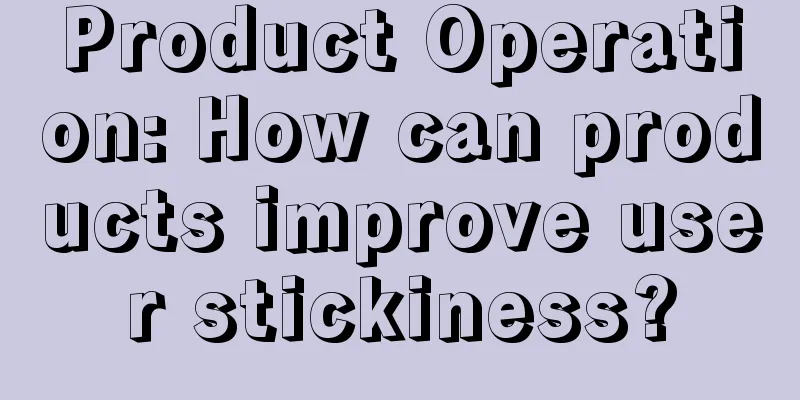
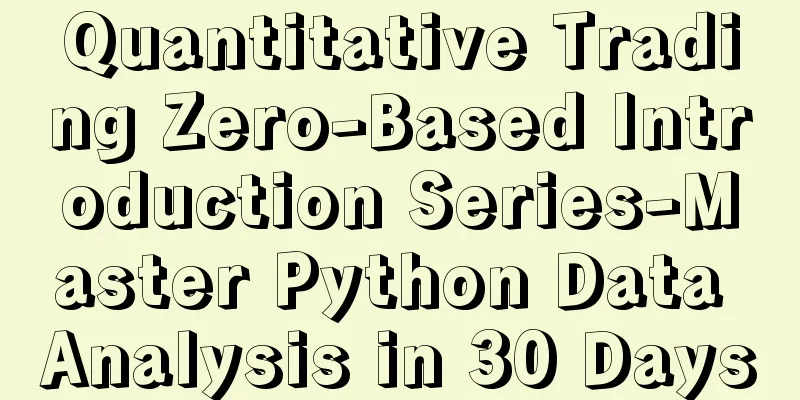

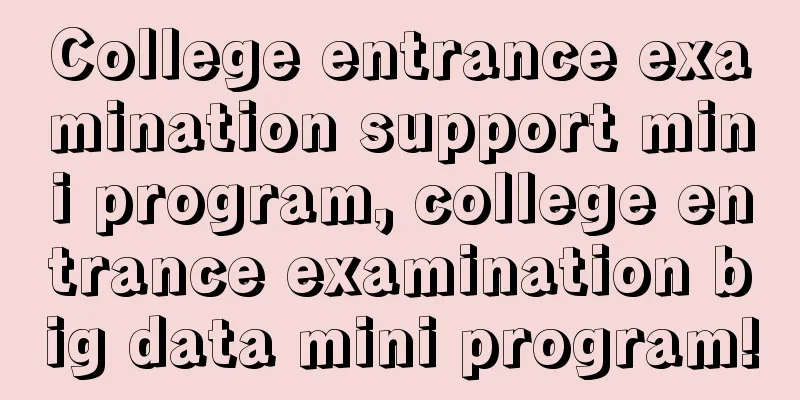
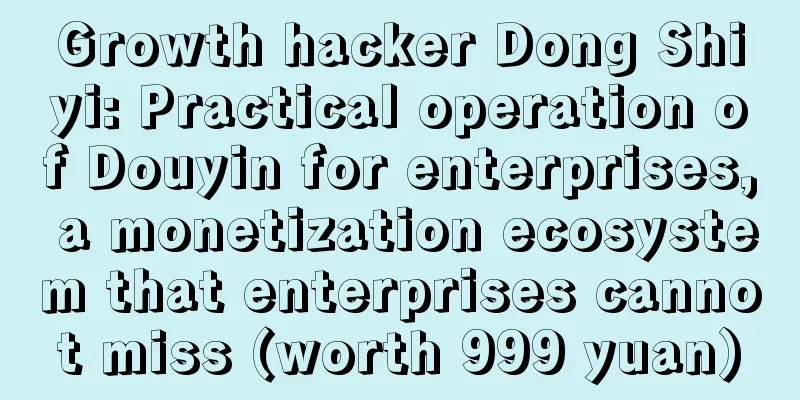
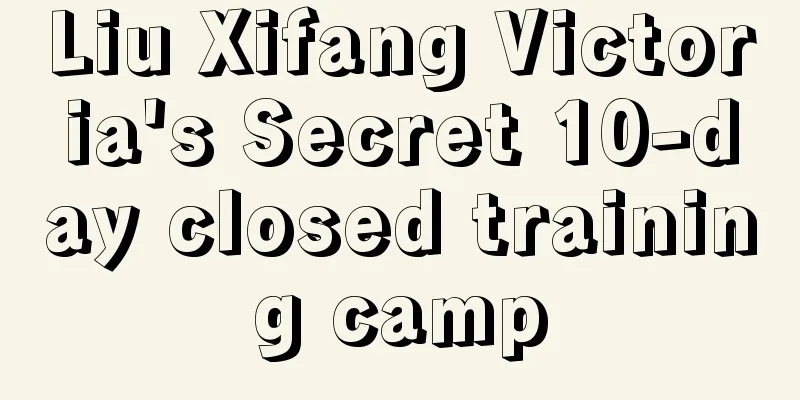
![Chen Naiba's Douyin Book List Performance Course, the core skills and operating standards for quickly starting an account [Video Course]](/upload/images/67cc29ea1fbef.webp)

